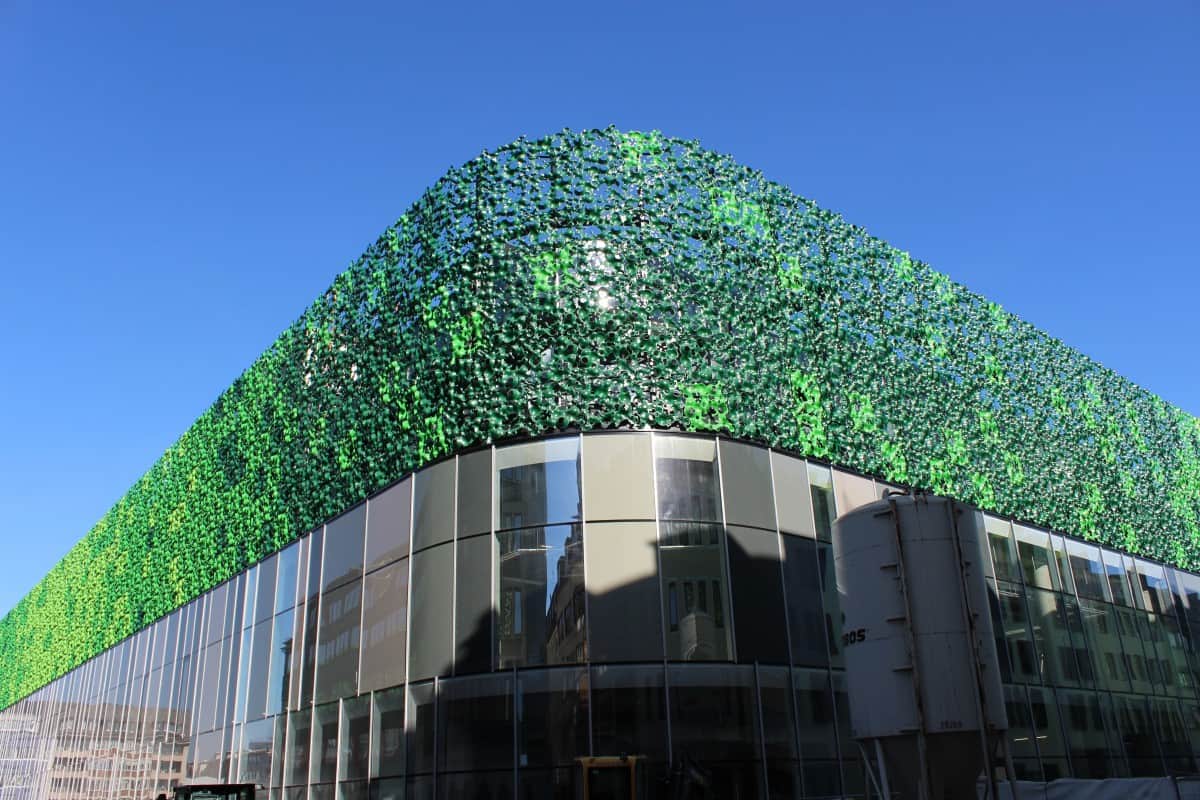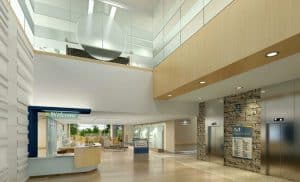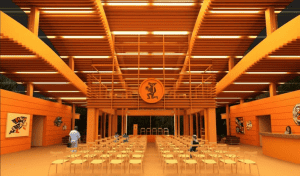
The fact that I’m wearing noise-cancelling headphones as I write strikes me as both ironic and illustrative of how much and how insidiously noise can affect us at work, rest, or play. With all the construction underway in my neighbourhood, I’m relieved to discover that the sounds of recorded waterfalls, surf, rain—or even Drum & Bass—are far more conducive to cognitive focus than, say, the dulcet tones of jackhammers or chainsaws. Though currently home-based, I have worked in conventional office environments, researching and writing amidst colleagues engaged in activities and conversations sometimes no less, um…dulcet, and I suspect wearing headphones to tune them out would probably have been construed as rude.
In GREEN ACOUSTICS: Because Noise Pollution Stinks, we addressed the regulatory and standards-setting limitations around noise as an environmental pollutant. It appears that organizations who conceive of and establish such standards have addressed those limitations as well. For starters, sounds don’t have to be dramatically “noisy” to cause discomfort, and their sources, whether outdoor or interior, are numerous.
While GBCI (Green Business Certification Inc.) is best known for implementing the internationally recognized LEED green building program, it also administers the WELL Building Standard on behalf of the IWBI (International WELL Building Institute), a subsidiary of design heavyweight Delos.
The best Built Environments play WELL with their natural surroundings
Launched in 2014 by Delos founder Paul Scialla, WELL might be seen as LEED’s decade-younger sibling: one with a different yet complementary role to play. Whereas LEED has established itself through promoting eco-friendly construction materials and sustainable building practices, WELL champions the health and well-being of the individuals who occupy those built environments. In 2018, the Standard was updated to encompass a broader scope and re-named WELL v2:
[…] To create this new version of WELL, we did a lot of research and a lot of listening. We tried to channel all that we learned and all that we heard into a product that is more accessible, more adaptable and more equitable, while still anchored by the latest scientific and medical knowledge.
WELL v2 principles are about being equitable, evidence-based, technically robust, customer-focused, and resilient. If your workplace or project was WELL certified prior to the 2018 update and you’d like to read a clear, comprehensive comparison of the two versions, the article WELL Tip: Understanding the comparison between WELL v1 and WELL v2 pilot explains it… well.
The original WELL Standard featured seven concepts—Air, Water, Nourishment, Light, Fitness, Comfort, Mind and Innovation—to address building occupant health and well-being. Until WELL v2 launched, acoustics fell under the category of Comfort; within the expanded 10-concept Standard, they fall under Sound:
The WELL Sound concept aims to bolster occupant health and well-being through the identification and mitigation of acoustical comfort parameters that shape occupant experiences in the built environment.
Acoustical comfort is defined as “The subjective human perception of the sonic environment in any given space, including enclosures and open environments.”
In addition to Sound, the ten WELL v2 concepts include Air, Water, Nourishment, Light, Movement, Thermal Comfort, Materials, Mind, and Community. Each concept consists of features with specific health objectives.
The WELL v2 Sound concept features and related acoustical planning incorporate:
- Sound Mapping—This feature identifies potentially troublesome interior space noise sources. Effective acoustic design separates noise-sensitive spaces from noise-producing ones to optimize cognitive performance, speech intelligibility and confidentiality—all key to a healthy and productive workplace.
- Maximum Noise Levels—A WELL v2 feature that determines maximum ambient background noise thresholds corresponding to optimal interior and exterior noise exposure levels.
- Sound Barriers—This Sound feature ensures that walls and doors meet a minimum degree of acoustical separation to provide the sound isolation needed for speech privacy.
- Reverberation Time—An aspect of acoustical comfort, reverberation time is measured based on room functionality.
- Sound Reducing Surfaces—This feature requires the use of acoustic materials that absorb and/or block sound as well as reducing reverberation.
- Minimum Background Sound—This feature incorporates dedicated artificial sound (e.g. a sound masking system) to uniformly maximize speech privacy between occupied spaces.
- Impact Noise Management—Background noise levels are managed by demonstrating compliance with impact noise mitigation techniques.
- Enhanced Audio Devices—This entails implementing organizational policies and providing occupants with devices that support enhanced speech intelligibility and hearing accessibility in spaces intended for telecommunication, instruction, and public address.
- Hearing Health Conservation—Organizational policies and programs supporting hearing health conservation are established and administered.
In collaboration with globally acclaimed design firm Perkins & Will’s Vancouver studio, BAP Acoustics is currently working on the tenant improvement design for a confirmed anchor tenant slated to occupy an 80,000-sq-ft at 1133 Melville upon building completion.
The Stack—as the development has been dubbed by Toronto-based developer Oxford Properties—is projected to be occupant-ready in 2022. Notable not only for committed LEED and WELL standards compliance, The Stack will also stand out (and UP!) as Vancouver’s tallest office tower to date. Daily Hive Vancouver editor Kenneth Chan has studied the development closely and his June 2019 story follows earlier articles on its history.
While the BAP Acoustics team is excited about our involvement in this high-profile project, it’s worth stressing that sustainability and wellness-centred building standards (such as LEED and WELL) continue to gain so much breadth and momentum that we think it won’t be long before they become, in a word, standard.
Whether your project is commercial, infrastructural, or residential, we invite you to explore the benefits—both ethical and financial—of going for the gold. (Although bronze is also nice.) As always, we recommend addressing acoustical considerations at the planning stage of your project. And we invite you to contact us to discuss your ideas and needs.
Interested in joining the BAP Acoustics team? Visit our Careers page.



